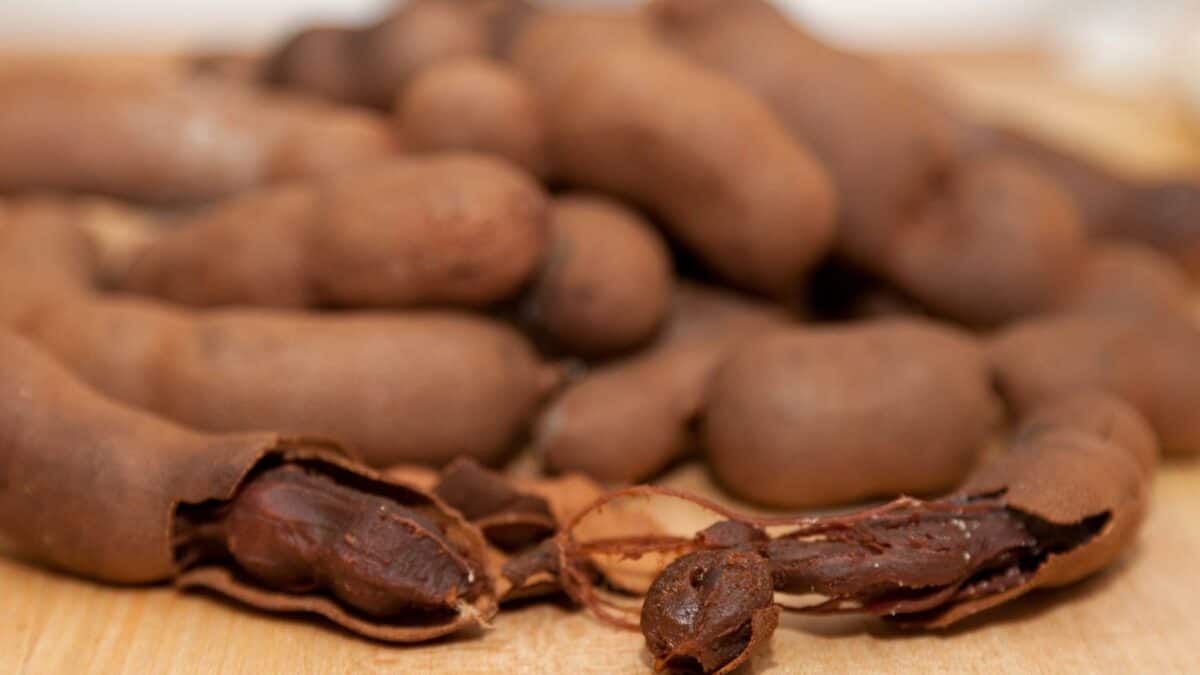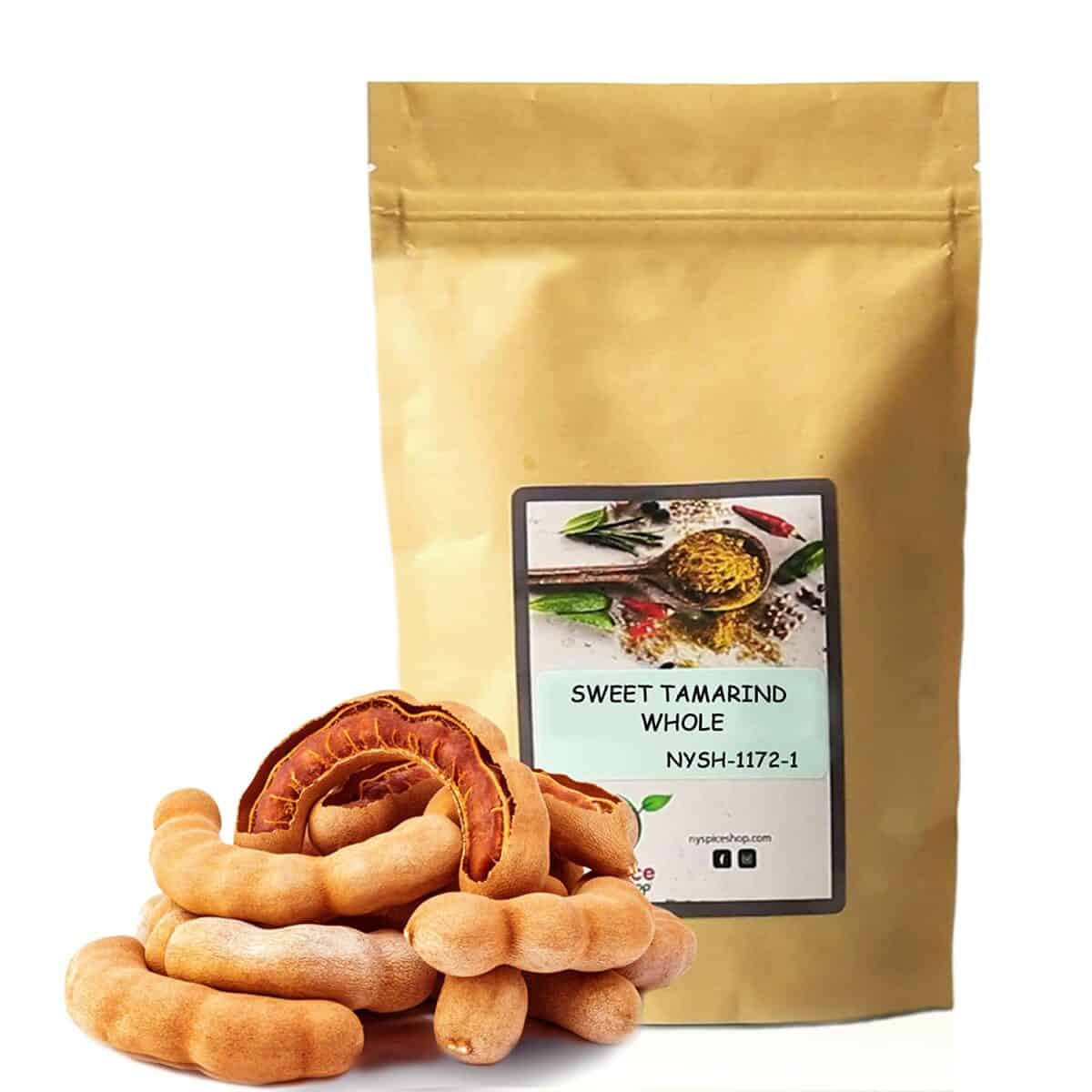Tamarind: The Sweet And Tangy Legume
Tamarind is a tropical fruit that is native to Africa. The fruit has a sour, tangy taste and is often used in Indian cuisine. Tamarind is also used to make tamarind juice, which is a popular drink in many parts of the world.
Tamarind is a type of legume, and the fruit is actually the pod of the tamarind tree. The pods are brown and have a wrinkled texture. Inside the pod, there are black seeds that are surrounded by a sticky, fibrous flesh.

The tamarind tree can grow to be up to 20 meters tall, and the leaves are long and dark green. The flowers of the tamarind tree are small and yellow, and they grow in clusters.
Tamarind is grown in tropical climates all over the world. In the Philippines, it’s called sampalok, while in Cuba, it’s known as tamarindo. In Mexico, tamarind is often used to make a drink called agua de tamarindo.
Tamarind has a long history of being used as a medicinal herb. The fruit is thought to have digestive and anti-inflammatory properties. Tamarind is also used as a laxative.
The tamarind tree is also grown for its wood, which is strong and durable. The timber from the tamarind tree is used for making furniture and in construction.
Tamarind is a very versatile fruit and can be used in many different dishes. It can be used to add flavor to curries, soups, stews, and even desserts. Tamarind can also be used to make chutneys, sauces, and marinades.

Check out our new cookbook
Bitemybun's family recipes with complete meal planner and recipe guide.
Try it out for free with Kindle Unlimited:
Read for freeIn this post we'll cover:
- 1 What does tamarind taste like?
- 2 How to cook fresh tamarind
- 3 Best Tamarind to buy
- 4 How to eat Tamarind
- 5 What’s the difference between Tamarind and tamari?
- 6 What’s the difference between Tamarind and lemon?
- 7 Popular Tamarind pairings
- 8 How to store Tamarind
- 9 When is Tamarind in season?
- 10 How to ripen tamarind?
- 11 Is Tamarind healthy?
- 12 Conclusion
What does tamarind taste like?
Tamarind has a sour, tangy taste that is similar to lemon. It’s fleshy and juice but looks like a legume with peas inside.
How to cook fresh tamarind
First, bring water to a boil in a pot. Then shell the fresh tamarind pods and remove any stringy fibers from the pulp. Remove the boiling water from heat and add sugar and the tamarind fruits. Let it sit for an hour and a half.
Best Tamarind to buy
There aren’t that many brands that sell tamarind as a whole. You often have sweets, paste or powder. But to cook with, the best brand of whole tamarind is this one from NY Spice House:

How to eat Tamarind
Can you eat raw tamarind?
Yes, you can eat raw tamarind. The fruit is often eaten as a snack or used in salads and you can eat it right off the tree or the ground. The pod protects the fruit so there’s no need to clean it.
You can get tamarind out of the pod by bending the pod with your fingers until it snaps open. The fruit is attached to the pod with stringy fibers but once you pull them away you can remove the fruit to eat. Eat small pieces of the fruit at a time and don’t eat the seeds in the middle.
What’s the difference between Tamarind and tamari?
Tamarind is a tropical fruit while tamari is a type of soy sauce. Tamari has a salty, tangy taste and tamarind is sweet and sour.
What’s the difference between Tamarind and lemon?
Tamarind is a tropical fruit that grows in a pod. Lemons are tart and acidic while tamarind is sweet and sour. Tamarind is also used in savory dishes while lemon is mostly used in sweet dishes or as a garnish.
Popular Tamarind pairings
Tamarind pairs well with chili, ginger, garlic, and onion. It’s also used in sweet dishes like candy, ice cream, and pudding.
How to store Tamarind
Tamarind can be stored at room temperature in a dry, airtight container. The fruit will last for several months this way. You can also freeze tamarind for up to a year.
When is Tamarind in season?
Tamarind is in season from March to can can also also freeze freeze tam tamarind for up to a year.
How to ripen tamarind?
Tamarind will ripen on the tree but you can also speed up the process by putting the tamarind in a bag with an apple or banana. The ethylene gas from the other fruit will help ripen the tamarind. You can also put tamarind in a sunny spot for a few days to help ripen it.
Is Tamarind healthy?
Tamarind is thought to have many health benefits. The fruit is a good source of fiber and antioxidants. Tamarind is also thought to have anti-inflammatory properties.
Some potential health benefits associated with consuming tamarind include:
Digestive support: Tamarind may help improve digestion and relieve constipation.
This is due to the high fiber content of the fruit.
Weight loss: Tamarind may help with weight loss by reducing appetite and increasing satiety. This is due to the presence of compounds like hydroxycitric acid (HCA) in tamarind.
Heart health: Tamarind may help improve heart health by reducing cholesterol and triglyceride levels. This is due to the presence of compounds like HCA and polyphenols in tamarind.
Diabetes: Tamarind may help improve blood sugar control in people with diabetes. This is due to the presence of compounds like HCA and fiber in tamarind.
Cancer: Tamarind may have anticancer effects. This is due to the presence of compounds like HCA and polyphenols in tamarind.
Tamarind is also a good source of vitamins and minerals, including vitamin C, iron, and magnesium.
Conclusion
This delicious fruit has a sour, tangy taste that makes it a popular ingredient in many dishes. Tamarind is also used to make a refreshing drink called agua de tamarindo. The tree that the fruit comes from is also useful, as the wood is strong and durable.
Check out our new cookbook
Bitemybun's family recipes with complete meal planner and recipe guide.
Try it out for free with Kindle Unlimited:
Read for freeJoost Nusselder, the founder of Bite My Bun is a content marketer, dad and loves trying out new food with Japanese food at the heart of his passion, and together with his team he's been creating in-depth blog articles since 2016 to help loyal readers with recipes and cooking tips.

